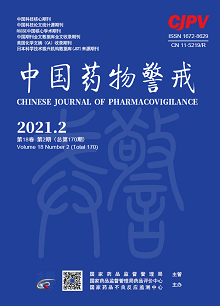|
|
104 Cases of New and Serious Adverse Drug Reactions Induced by Creatine Phosphate Sodium for Injection
SUN Chunxiao, TIAN Yuejie, XIE Yanjun, XU Lili, CHANG Hong, HUO Yanfei, WU Shifu
2021, 18(2):
145-149.
DOI: 10.19803/j.1672-8629.2021.02.10
Objective To analyze the factors related to new and serious adverse drug reactions (ADRs) induced by creatine phosphate sodium for injection, and provide reference for clinical medication safety. Methods As was reported by Shandong Province to the national ADR monitoring system between January 2008 and December 2018,104 cases of new and serious ADRs of creatine phosphate sodium for injection were retrieved for analysis. The information about these cases of ADRs, such as patients' age and gender,preexisting diseases,allergy,methods of administration,combined therapy,the onset time and results of ADRs, was analyzed statistically.Results Of the 104 reports about new and serious ADRs of creatine phosphate sodium for injection, 71 cases (68.27%) were new ADRs, and 33 cases (31.73%) were severe ones. There were 61 males and 43 females involved, and the ratio of males to females was 1.42∶1. Most of them were aged 61-70 years or less than 10 years old, accounting for 57.69% of the total. There had been 5 cases of adverse drug reactions/incidents before. Most of these ADRs occurred within one day of treatment. The systems involved were mainly gastrointestinal damage, systemic damage, damage to the skin and its attachments, damage to central and peripheral nervous systems, and damage to the respiratory system. The main manifestations included nausea, vomiting, chills, high fever, rash, itching, dizziness, and chest tightness. Conclusion The drug instructions for creatine phosphate sodium for injection are not specific enough. The prevention of ADRs and standard clinical application should become a priority, and drug use has to be monitored to ensure safe and effective drug use.
References |
Related Articles |
Metrics
|

